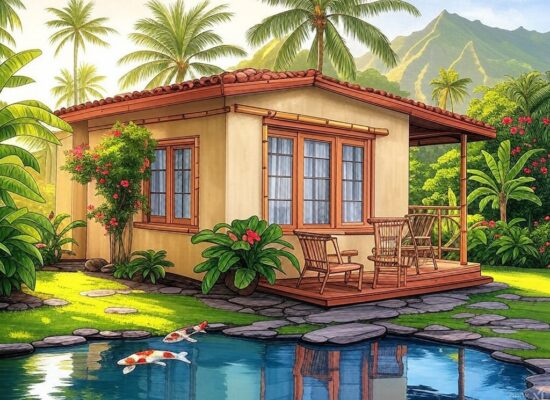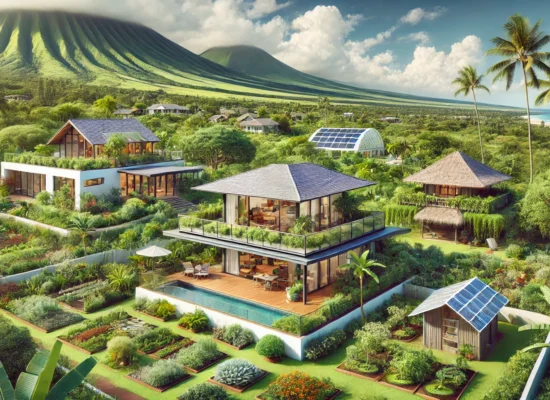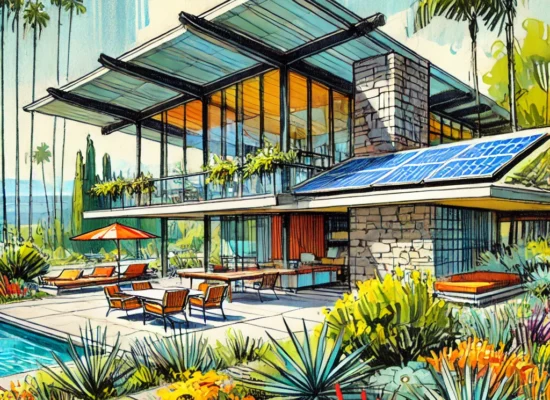Designing a residential property in Hawaii can be a challenging task, particularly when you have limited land to work with. However, with the right approach and creative solutions, it’s possible to design a beautiful, functional, and sustainable home that fits seamlessly into the natural beauty of Hawaii. In this blog post, we’ll explore some of the key considerations and solutions for designing a residential property within Hawaii’s limited land.
Residential Design within Hawaii’s Limited Land
One of the most important considerations when designing a property in Hawaii is the limited land available. To make the most of this space, it’s essential to carefully plan and design the property to maximize functionality and make the most of every inch. When designing for small spaces, it’s important to think outside of the box and utilize creative solutions to optimize space.
Maximizing Natural Light
One of the most effective ways to make a small space feel larger is to maximize natural light. Natural light can make a room feel brighter, more spacious, and more inviting. When designing a property in Hawaii, it’s important to consider the orientation of the property and plan the layout accordingly to ensure that you’re making the most of natural light.
Multi-Purpose Furniture Solutions
Another effective solution for designing a residential property within Hawaii’s limited land is to incorporate multi-purpose furniture solutions. Multi-purpose furniture can serve multiple functions, allowing you to make the most of limited space. Examples of multi-purpose furniture solutions include sofa beds, wall beds, or storage ottomans.
Built-in Storage Solutions
Another effective solution for maximizing space in a small property is to incorporate built-in storage solutions. Built-in storage can help to keep your property organized and clutter-free while also making the most of every inch of available space. Examples of built-in storage solutions include built-in shelves, cabinets, or under-stair storage.
Outdoor Living Spaces in Hawaii
In addition to making the most of limited indoor space, it’s also important to consider outdoor living spaces when designing a residential property in Hawaii. Outdoor living spaces can help to extend the usable space of your property and provide a beautiful place to relax and enjoy the natural beauty of Hawaii. Consider incorporating features like a lanai, outdoor kitchen, or outdoor seating area to make the most of your outdoor space.
Building on Steeply Sloped Lots
When designing a residential property in Hawaii, it’s important to consider the unique challenges presented by steeply sloped lots. Building on a steeply sloped lot requires careful planning and attention to detail to ensure that the property is structurally sound and can withstand natural disasters like earthquakes or landslides. It’s important to work with a structural engineer to ensure that your property is built on a stable foundation.
Sustainable Home Design
Finally, when creating residential design within Hawaii’s limited land, it’s important to consider sustainability. Sustainable home design can help to reduce your environmental footprint while also reducing your utility bills. Examples of sustainable design features include solar panels, high-efficiency HVAC systems, and water-saving fixtures.
In conclusion, designing a residential property within Hawaii’s limited land presents unique challenges, but with careful planning and creative solutions, it’s possible to create a beautiful, functional, and sustainable home. Incorporating solutions like maximizing natural light, multi-purpose furniture, built-in storage, outdoor living spaces, building on steeply sloped lots, and sustainable design features can help you to make the most of your property while also maintaining the natural beauty of Hawaii.
 Copyright secured by Digiprove
Copyright secured by Digiprove 



